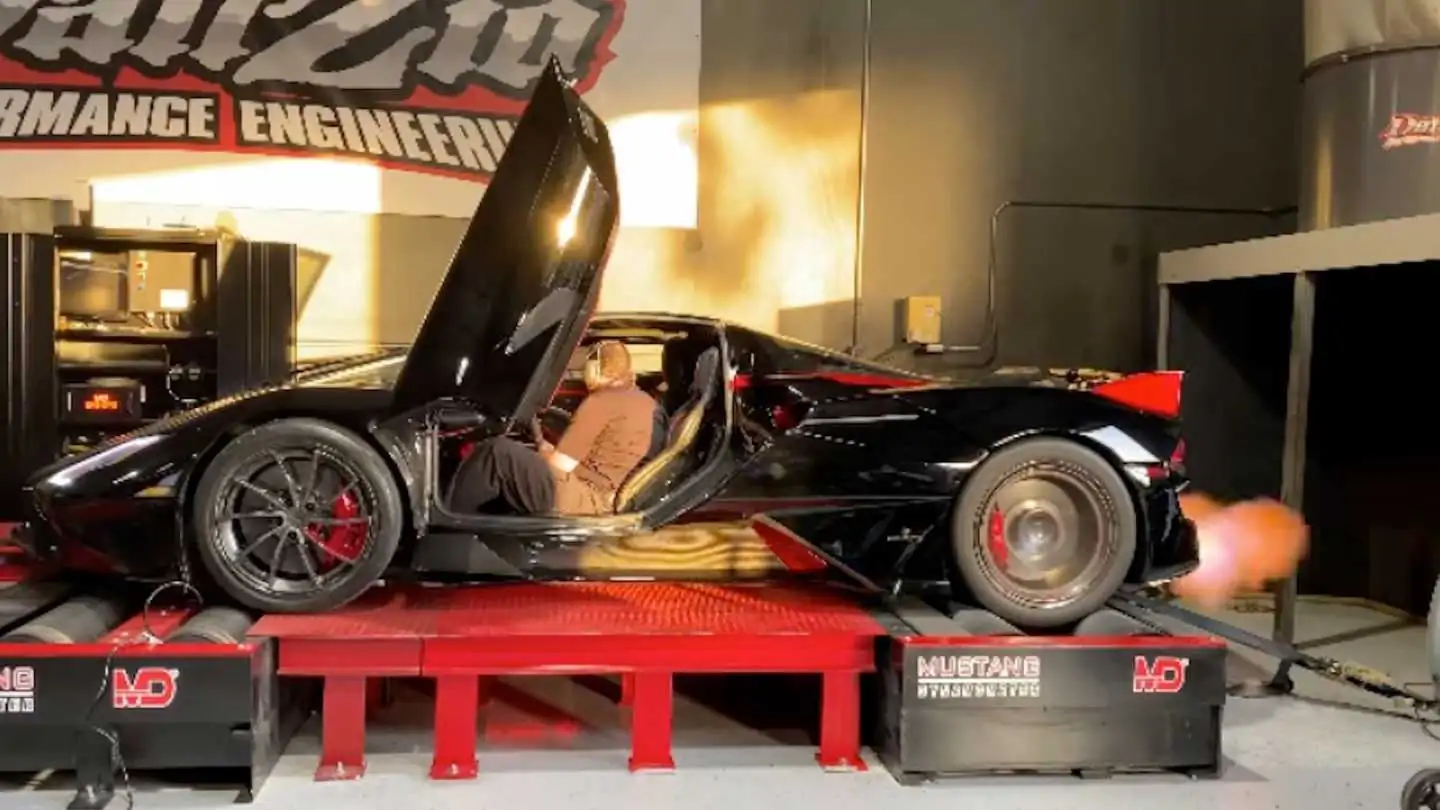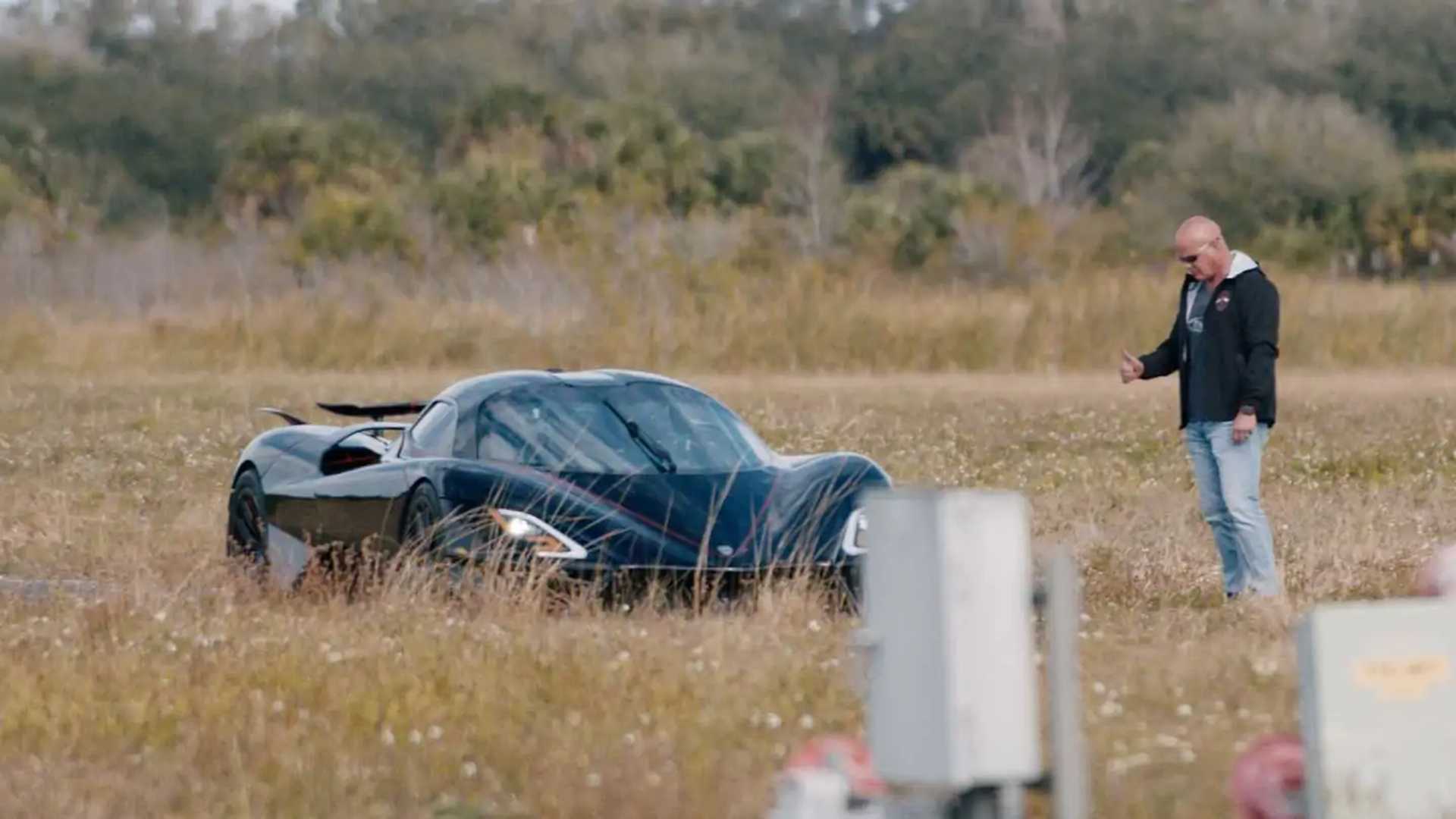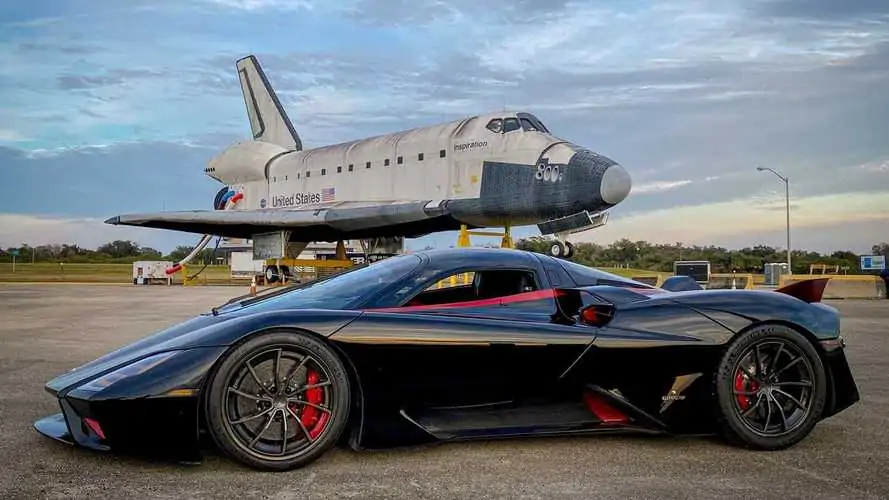
Can SSC (and honestly) break the 300-mph barrier? Let’s see.
The SSC Tuatara’s debut in 2020 shocked the world when it revealed its powerful engine, a twin-turbocharged 5.9 liter flat-plane crank V8 with 1,750 horsepower (1.305 kilowatts), on E85, and 1,350 horses (1007 kW) using 91 octane.
These numbers don’t quite match up, as it turns out. SSC North America posted a recent Instagram photo showing the engine of the Tuatara while it was being tested on a Dyno. Nelson Racing Engines was responsible for the test.
The embedded social media post below allows you to view the video. As shown in the lower corner of the footage, the engine produced nearly 1,890 horsepower (1.390 kilowatts). Although it is difficult to determine the exact number, one thing is certain: it is much higher than what was claimed.
You can view the embed social media post via the Instagram link by following the source link at bottom of the story.

SSC doesn’t have much to prove as the Tuatara is still recognized as the fastest production vehicle in the world. It averages 282.9 miles an hour and 455.3 kilometers per hour on the required back-and-forth passes.
SSC still has not broken the 300 mph barrier (483 km/h), despite that feat being achieved by a Tuatara owner. Its previous attempts were fraught with controversy , which led to SSC admitting it didn’t reach the speed.
SSC is not just competing with itself in the race for fastest production cars. Hennessey Performance, Koenigsegg and others have their entries. It’s only a matter time before the cited record is broken – either by viable contenders or SSC.
Bugatti announced that it was ending its pursuit of speed records after a specially-built Chiron achieved a top speed at 304.7 mph (4990.4 kph) in a single run.
